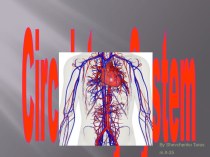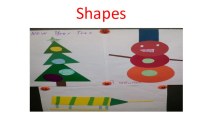- Главная
- Разное
- Бизнес и предпринимательство
- Образование
- Развлечения
- Государство
- Спорт
- Графика
- Культурология
- Еда и кулинария
- Лингвистика
- Религиоведение
- Черчение
- Физкультура
- ИЗО
- Психология
- Социология
- Английский язык
- Астрономия
- Алгебра
- Биология
- География
- Геометрия
- Детские презентации
- Информатика
- История
- Литература
- Маркетинг
- Математика
- Медицина
- Менеджмент
- Музыка
- МХК
- Немецкий язык
- ОБЖ
- Обществознание
- Окружающий мир
- Педагогика
- Русский язык
- Технология
- Физика
- Философия
- Химия
- Шаблоны, картинки для презентаций
- Экология
- Экономика
- Юриспруденция
Что такое findslide.org?
FindSlide.org - это сайт презентаций, докладов, шаблонов в формате PowerPoint.
Обратная связь
Email: Нажмите что бы посмотреть
Презентация на тему Автомобиль и его механизмы
Содержание
- 2. I know a lot about cars, man.
- 3. Types of vehicles
- 4. There are a lot of car body configurations. Let’s look at them.
- 5. A sedan or saloon is a passenger car , the most common among the car body configurations.
- 6. A hatchback is a car body configuration with a
- 7. A convertible or cabriolet is an automobile body style that can convert between an open-air mode and an enclosed one.
- 8. A Sport Utility Vehicle (SUV) is a
- 9. A pickup truck is a light duty track having an
- 10. A limousine is a luxury sedan or saloon
- 11. A Lorry / Truck is a motor vehicle designed to transport cargo.
- 12. Look at the pictures and name types of carLorry / TruckLimousine
- 13. Look at the pictures and name types of carSedan / SaloonSport Utility Vehicle
- 14. Well done!!!!!!
- 15. Car’s anatomy
- 16. Let's look at the main components of
- 17. Let's look at the main components of
- 18. There are a lot of tubes, pipes,
- 19. Although modern cars differ in style, performance
- 20. EngineIt burns fuel and converts the heat into mechanical energy which turns the wheels.
- 21. EngineThere are temperatures of over 700°C inside
- 22. TransmissionThis carries the power from the engine
- 23. BodyworkFew modern cars have a chassis ( ходовая часть), and the bodywork holds the car together.
- 24. SteeringThat is necessary in order to steer
- 25. Suspension (подвеска)Modern suspension systems of springs (пружины),
- 26. Wheels, tyres (шины) and brakes (тормоза)Wheels with
- 27. ElectricsA 12 volt battery provides the primary
- 28. Let’s check yourself
- 29. Let’s check yourself
- 30. Скачать презентацию
- 31. Похожие презентации
I know a lot about cars, man. I can look at any car’s headlights and tell you exactly which way it’s coming.
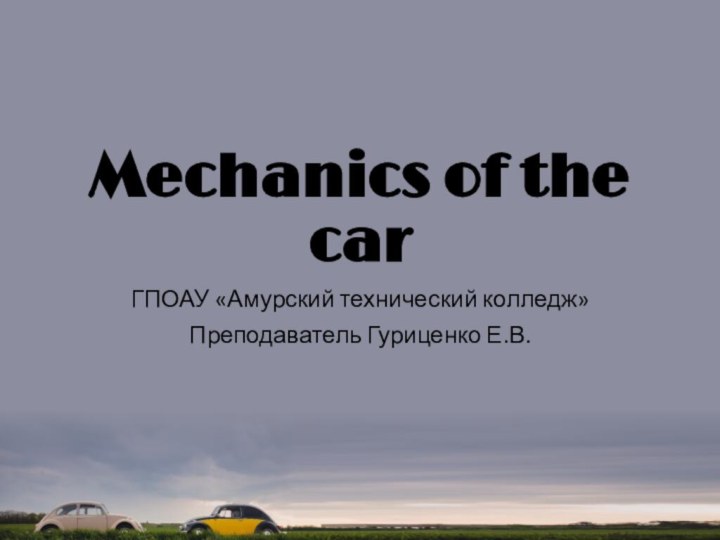

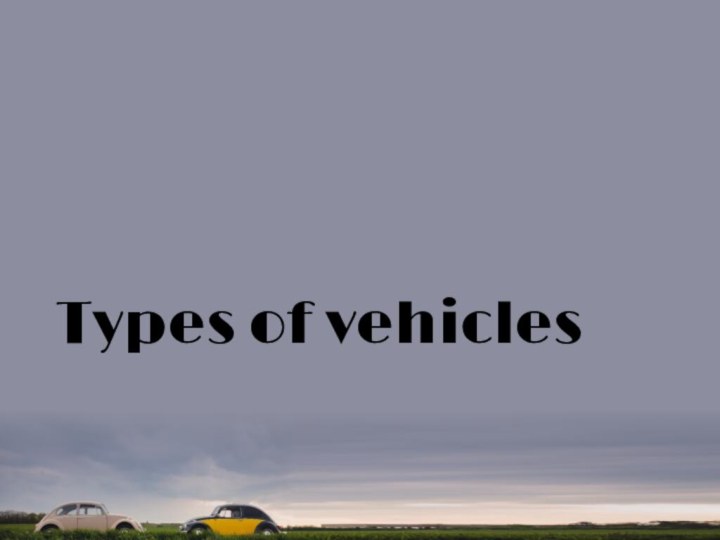

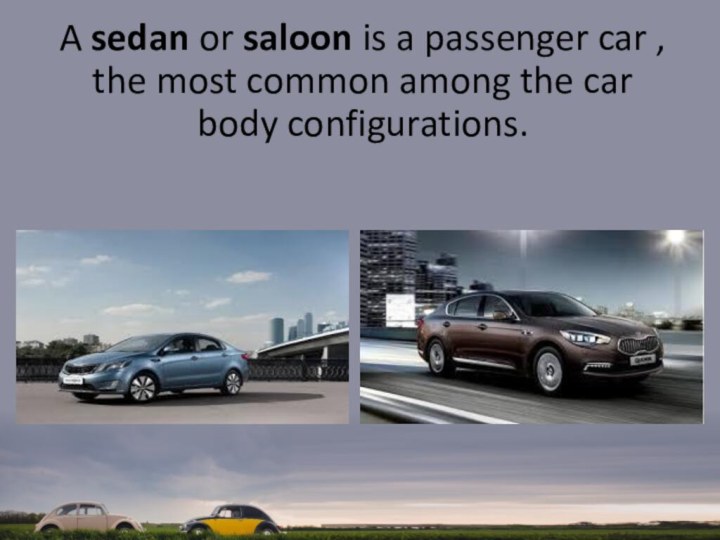
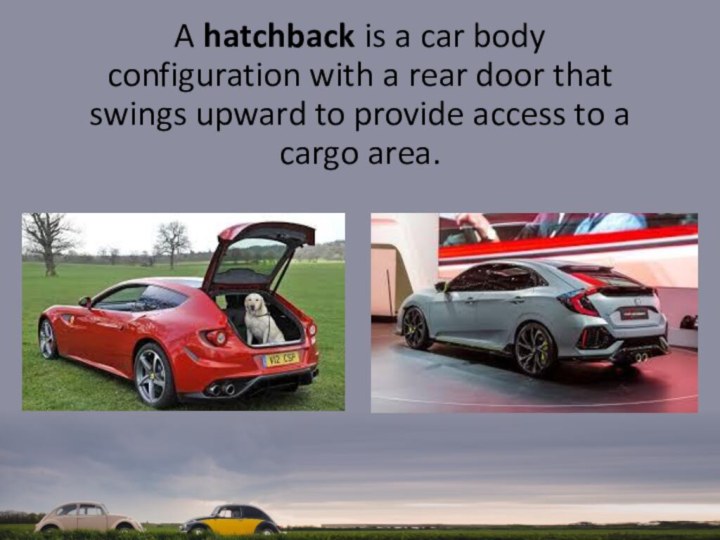
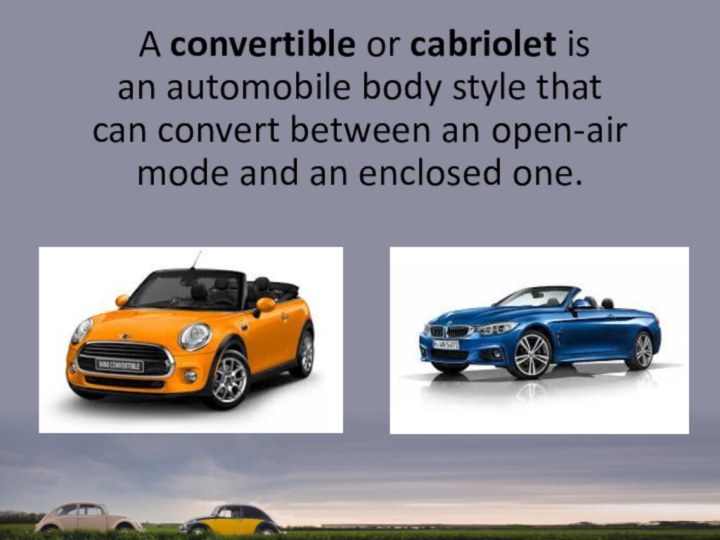
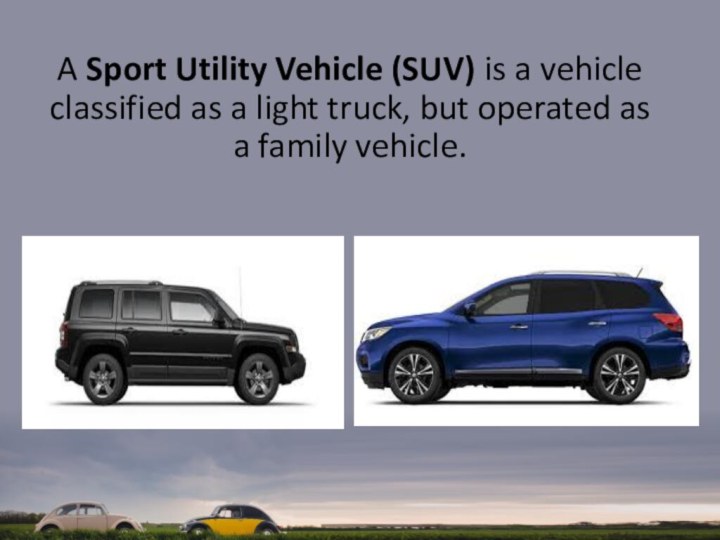













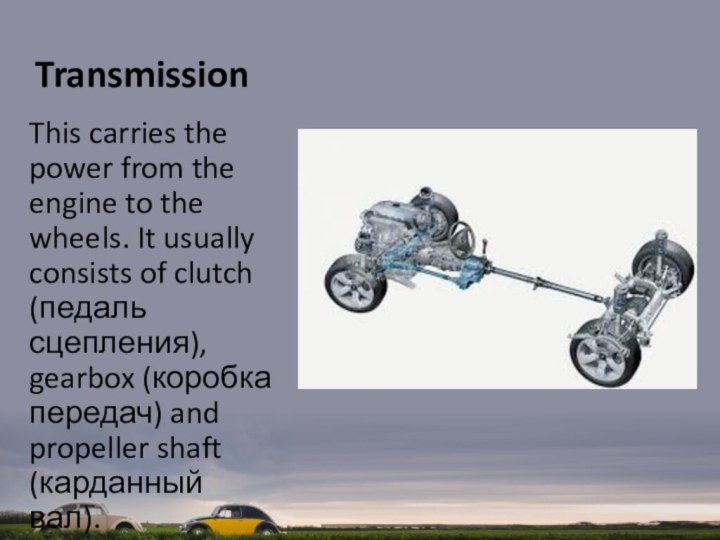
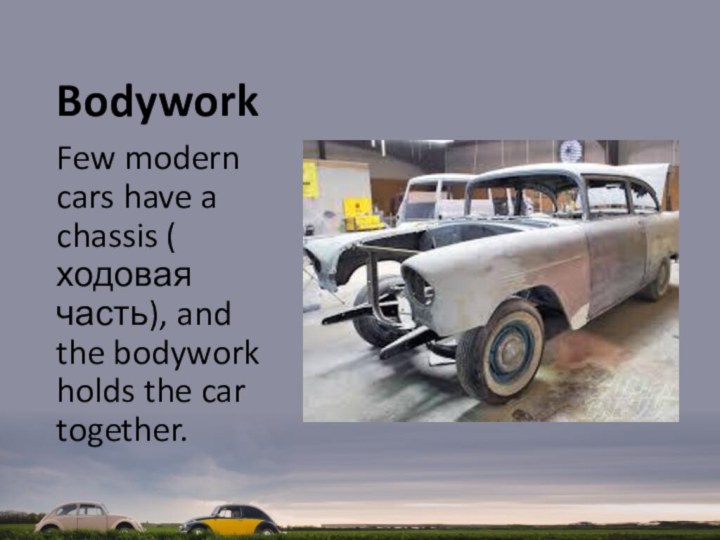




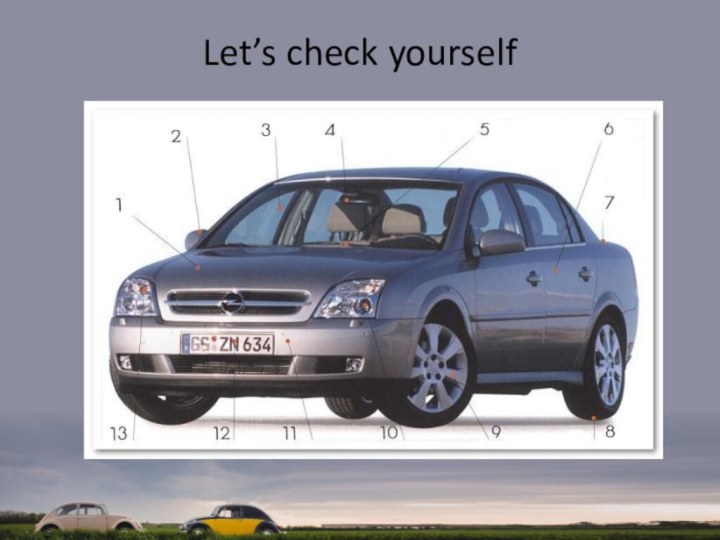
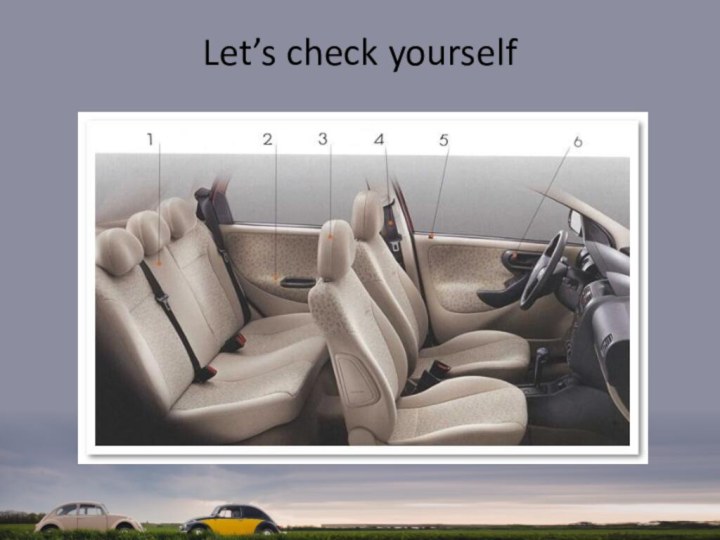

Слайд 6 A hatchback is a car body configuration with a rear
door that swings upward to provide access to a
cargo area.Слайд 7 A convertible or cabriolet is an automobile body style that can convert between
an open-air mode and an enclosed one.
Слайд 8 A Sport Utility Vehicle (SUV) is a vehicle
classified as a light truck, but operated as a
family vehicle.Слайд 9 A pickup truck is a light duty track having an enclosed
cab and an open cargo area with low sides
and tailgate.Слайд 10 A limousine is a luxury sedan or saloon car
generally driven by a chauffeur and with a partition between
the driver and the passenger compartment.Слайд 16 Let's look at the main components of the
vehicle
Body – кузов
Bonnet – капот
Boot – отделение для багажа
Bumper
– бамперGlovebox – бордачок
Front seat – переднее сиденье
Passenger seat – пассажирское сиденье
Roof – крыша
Wheel – колесо
Windscreen – переднее, лобовое стекло
Слайд 17 Let's look at the main components of the
vehicle
Cab – кабина
Front / back door – передняя /
задняя дверьDashboard – приборная панель
Safety seat – детское сиденье
Air bag – подушка безопасности
Outside / wing mirror – зеркало заднего вида / боковое зеркало
Steering wheel - руль






